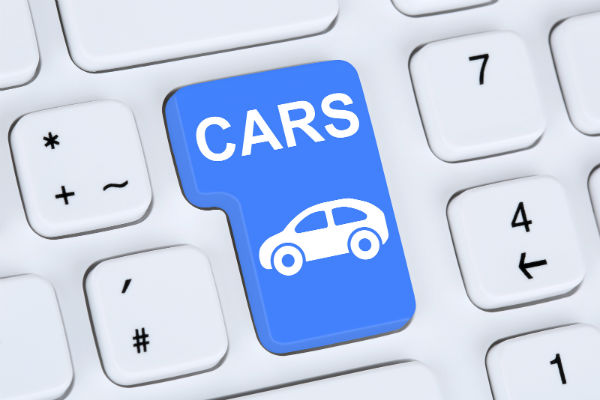Are You Thinking About Buying A Car Online?

So you’re in the market for a new vehicle. But have you allocated at least one full day of your weekend to explore dealerships at your local auto mall? Make sure you’ve perfected your negotiation skills and have your tire-kicking shoes ready for the big day. Traditional car buying tends to be a confusing, stressful and time-consuming process, but what if it didn’t have to be?
Are you one of the millions of Canadians who prefers to shop while in your pyjamas? What exactly are we willing to purchase online, though? The CIRA Internet Factbook, released in March 2016, reveals that Canadians regularly buy clothing, electronics, books and travel packages online and Forester Research estimates that Canadians will spend $39 billion online by 2019. This figure does not appear to include online car buying, which could have a significant impact on this estimate.
Accenture surveyed 10,000 people from eight countries (Canada was not included), and found that 53% of respondents were willing to purchase their next vehicle online, which 16% of which had already done so. Clearly, we’re becoming more comfortable with the idea of making bigger purchases online (furniture, TVs, etc.), but what do we need to know before shopping online for our next car?

What you should know
Desjardins Insurance and Reader’s Digest have put together some helpful tips for car buyers looking to skip the in-person dealership hassle by shopping online:
1. Do your research and decide on a vehicle
Once you know that you’re ready to purchase a vehicle, go online and do some research about the makes and models that would best meet your needs. Get familiar with the technical specs, read reviews and watch videos about how the car performs and then compile a list of pros and cons for the vehicle options you’ve selected. After careful consideration, select the vehicle make and model that you want to purchase.
2. Use several different websites to compare pricing
Now that you’ve selected a specific make and model, check a variety of websites to see available feature and pricing options. Manufacturer websites, dealership websites and classified websites like Autotrader.ca can help you figure out the best deal for your next vehicle. Make sure to look at the sticker price listed on these sites rather than the invoice price, which includes discounts offered to the dealer.

3. Determine driving costs where you live
Buying a car is not a one-time expense; it is a gift that keeps on giving, but at a cost. CAA has found that, “…four in five Canadians under-estimate the cost of owning and operating a vehicle.” The annual cost of driving a typical compact car is approximately $9,500, so research the average driving costs where you live to ensure the vehicle you select will not put unnecessary strain on your monthly budget. You can use CAA’s online Driving Costs Calculator to help you figure out how much it will cost to drive your car based on the price of the car, loan repayment information, insurance costs, your driving habits and the current price of gas where you live.
4. Determine what financing option is best for you
You’re likely to be offered financing by the dealer you choose, but it’s wise to do some research so you ensure you get the best deal on your car loan. Check your credit and contact several banks and other auto finance providers to find out what auto loan options are available to you.
5. Contact the dealership or seller with any questions
Once you’ve selected the vehicle that you’re most interested in, contact the dealership or seller via email with any questions about the car that you may have. Consider asking for information about previous owners, whether the car was owned in the U.S., how the car was maintained and whether the car has any current or expected mechanical issues.
6. Negotiate if possible
Just because you’ve decided to forgo the experience of playing verbal Ping-Pong with a car salesman face-to-face on the dealership lot, it doesn’t mean that you’re not entitled to negotiate. Provide your offer for the vehicle via email and make sure that any quotes you receive include a full price breakdown and list any extra fees. Some additional fees included in the price of the car can be negotiated down or removed completely, saving you some money.
7. Get the CarProof report
So you’ve done your research and found the car of your dreams at a great price and you’re ready to get behind the wheel. Before you commit to the vehicle however, make sure you receive a copy of the CarProof report so you know the exact history of the car before you buy it.
8. Arrange a test drive
This is likely to be the first time you interact face-to-face with someone at the dealership during the online car buying process, but it’s important that you test-drive your vehicle before you finalize the purchase. Once online car buying becomes more common, there will be a lower likelihood of you even visiting the dealership to do this. Carvana, a U.S. company trying to make online car buying the norm, offers its customers a 7-day test own period after the car is delivered. AutoLoans.ca also delivers your chosen car directly to you at your home or office for you to test-drive and offers a 30-day exchange if you aren’t satisfied.

Buying a car shouldn’t necessarily be an easy process; after all, you’re making a large purchase and a pricey decision, so it requires a great deal of thought and research. That being said, the car buying process has definitely been made easier with the ability to purchase vehicles online. If you’re in the market for a vehicle and tired of how car buying typically works, it may be worthwhile for you to complete your next vehicle purchase online. Enjoy buying your next car comfortably in your own home!

